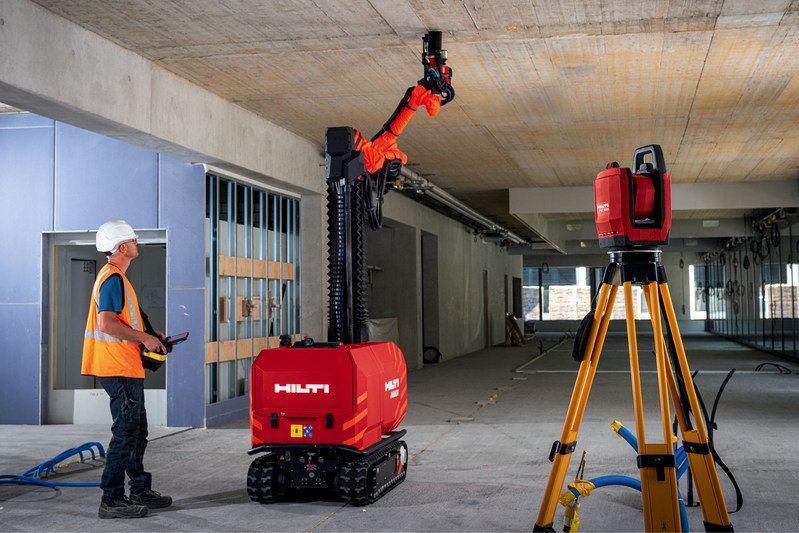
Hilti Unveils BIM-Enabled Construction Jobsite Robot
Hilti, an innovator of tools, technology, software and services to the commercial construction industry, today introduced its first robot, Jaibot, for semi-autonomous mobile ceiling-drilling. The Hilti Jaibot construction robot will help mechanical, electrical and plumbing (MEP) installation contractors tackle productivity, safety and labor shortage challenges. With this new construction automation solution, Hilti makes a further step toward the digitization of construction sites.


The Jaibot executes its tasks based on building information modeling (BIM) data. The robot is a completely cordless and easy-to-use system that doesn’t require expert skills. It locates itself accurately indoors, drills the holes dust-controlled and finally marks them according to the trade. This is what makes the solution ideally suited for the MEP trade.
“The productivity of the construction industry has been lagging behind other sectors for years. Margin pressure and shortages of skilled labor are already facts of life in our industry and make it increasingly difficult to overcome productivity shortfalls. But leveraging the opportunities offered by digitization will compensate for it. We do this by intelligently linking processes, teams and data,” said Jan Doongaji, Member of the Executive Board, Hilti Group. “With Jaibot, and in close collaboration with our customers, we are further stepping toward realizing the efficiency that digital transformation can and will bring to construction sites.”
Paradigm shift in the construction industry underway
Time and budget overruns are common, especially for large construction projects. Significant productivity gains are possible with digitally planned construction projects and their realization with the help of robotic solutions. BIM-enabled robotic solutions also make the construction process more transparent with improved execution speed, constant performance and fewer errors. Daily progress can be reported from the field to the project office via cloud computing. Potential conflicts between the trades involved on a jobsite also can be detected at an early stage and then limited, resulting in more projects delivered on-time and within budget.
Helping workers with the most physically demanding tasks
Safety played an important role in the development of the Jaibot. It is designed to assist tradespeople in physically demanding, repetitive installation tasks such as drilling numerous holes overhead for many mechanical, electrical or plumbing installations. It is navigated by the worker via remote control and uses reference data from a robotic total station, the Hilti PLT 300. Holes within reach are drilled automatically.
“We looked at which routine work on the construction site is among the most stressful, and that is primarily overhead work,” said Julia Zanona, Product Manager for Robotics at Hilti. “From the beginning, it was important to us to develop a robotic solution that supports our customers where it is most needed. The Hilti Jaibot takes over the most strenuous and exhausting tasks, working alongside the installation team.”






